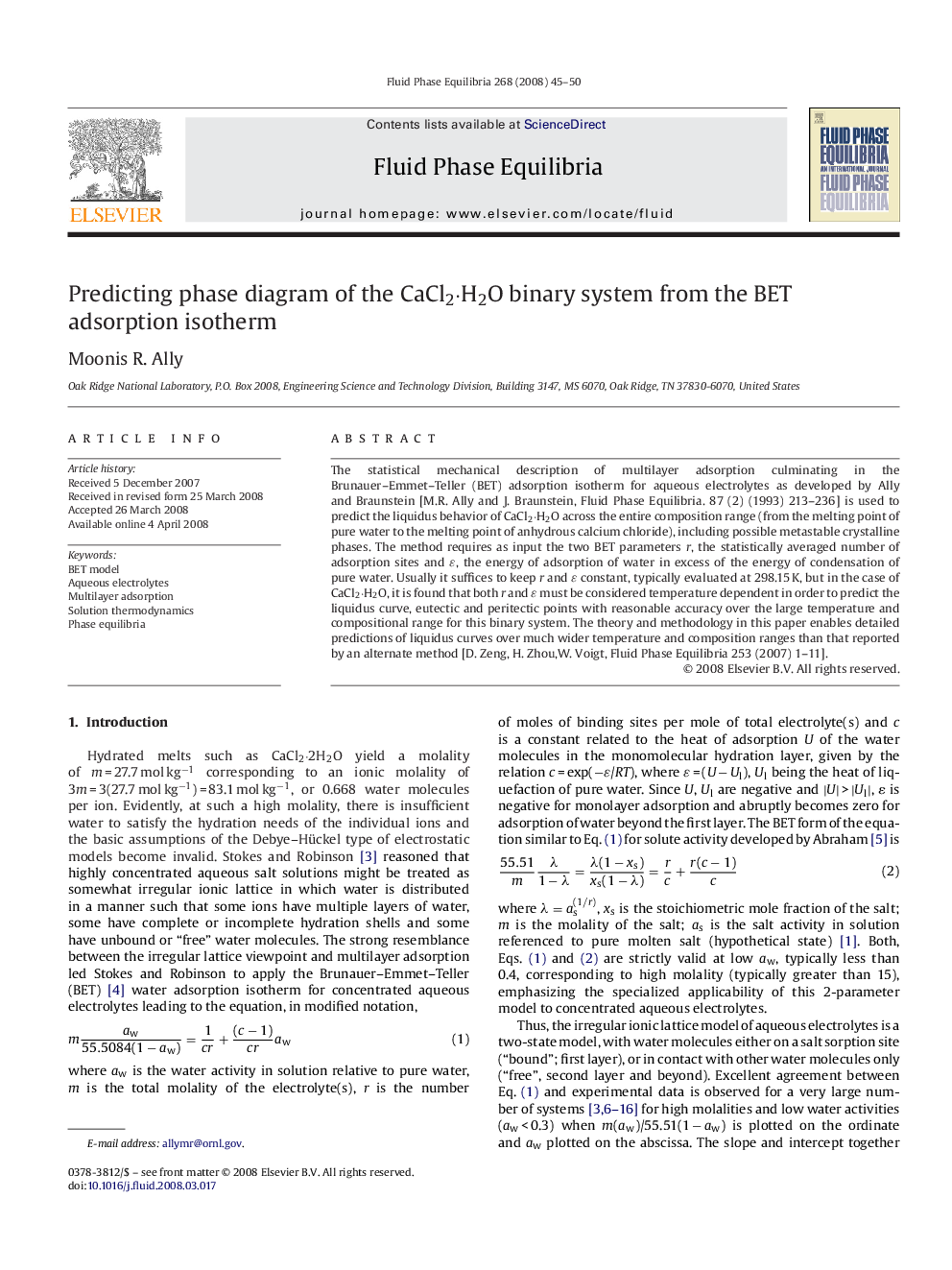| Article ID | Journal | Published Year | Pages | File Type |
|---|---|---|---|---|
| 204652 | Fluid Phase Equilibria | 2008 | 6 Pages |
The statistical mechanical description of multilayer adsorption culminating in the Brunauer–Emmet–Teller (BET) adsorption isotherm for aqueous electrolytes as developed by Ally and Braunstein [M.R. Ally and J. Braunstein, Fluid Phase Equilibria. 87 (2) (1993) 213–236] is used to predict the liquidus behavior of CaCl2·H2O across the entire composition range (from the melting point of pure water to the melting point of anhydrous calcium chloride), including possible metastable crystalline phases. The method requires as input the two BET parameters r, the statistically averaged number of adsorption sites and ɛ, the energy of adsorption of water in excess of the energy of condensation of pure water. Usually it suffices to keep r and ɛ constant, typically evaluated at 298.15 K, but in the case of CaCl2·H2O, it is found that both r and ɛ must be considered temperature dependent in order to predict the liquidus curve, eutectic and peritectic points with reasonable accuracy over the large temperature and compositional range for this binary system. The theory and methodology in this paper enables detailed predictions of liquidus curves over much wider temperature and composition ranges than that reported by an alternate method [D. Zeng, H. Zhou,W. Voigt, Fluid Phase Equilibria 253 (2007) 1–11].
